25 ++ g-j feeding tube placement 188079-G-j feeding tube placement
Percutaneous jejunostomy entails placement of feeding tube directly into small bowel This method is technically more difficult than percutaneous gastrostomy and is associated with higher risk Abdominal photograph is superimposed on abdominal radiograph in same patient to illustrate important landmarks for gastric puncture Margin of the leftThe Avanos Introducer Kit avoids a second invasive procedure by faciliating the initial placement of a MIC, MICKEY G,J or GJ balloon retained feeding tubes The Introducer Kit delivers all the essential tools for an efficient, secure and less invasive placement Designed for Fluoroscopic, Endoscopic or Laparoscopic placement The kit offersPEG Tube Placement Surgery Your doctor will probably tell you not to eat or drink anything for 8 hours before your operation At the hospital, you'll be asked to take off eyeglasses and dentures

An Abdominal Radiograph Confirms The Proper Placement Of The Gj Tube Download Scientific Diagram
G-j feeding tube placement
G-j feeding tube placement-Can anyone help me identify the correct code(s) for the open placement of a feeding gastrojejunostomy tube, both as a standalone procedure and when done with another procedure?Connect syringe to medication port or "G" port on tube and gently push in medication If medication port is not available, connect syringe to end of tube Flush tube well following all medications to make sure the tube does not clog and then reconnect feeding bag



Peritonitis Related To G Tubes And Gj Tubes
Percutaneous endoscopic gastrostomy (PEG) tubes are placed for a variety of conditions that interfere with a patient's oral intake Commonly, PEG tubes are used to provide a route for enteral feeding, hydration, and medication administration in patients who are likely to have prolonged inadequate or absent oral intakeBegin with water on evening of tube placement and begin regular tube feeding after 24 hours, as instructed You may shower 24 hours after tube placement To remove drainage, crusts, or blood from the skin around the tube, use a solution of half hydrogen peroxide half water Swab once a day and asThe gastrostomy feeding tube (Gtube) and jejunostomy feeding tube (Jtube) are used to provide nutrients to patients who have a functional gastrointestinal tract, but can't take adequate amounts of food through the mouth Gtube is a medical device, inserted in the stomach via a small abdominal cut
The most common indication for GJ tube placement was gastroesophageal reflux with aspiration in 51 patients and feeding intolerance and vomiting in 19 patients The mean (range) number of tube replacements was 22 (114) over a median (range) duration of followup of 39 (2474) daysA feeding tube is a device that's inserted into your stomach through your abdomen It's used to supply nutrition when you have trouble eating Learn about how to prepare for a feeding tubeGastroJejunal (GJ) Tube GJ tubes are a longterm option that combines a G tube with a J tube for more flexibility based on a person's needs A GJ tube goes through the abdomen and ends up in two different places the stomach for medicine and ventilation, and the small intestine (jejunum) for feeding
Gtube Feeding through Gtube is faster than with Jtube because the stomach has expandable area and fundus Jtube Slow continuous feeding with a pump is required The feeding takes 16 hours per day For some patients a 24 hour feeding may be requiredFeeding Tube Service Home Care Instructions after Placement of a GastroJejunal (GJ) Tube Your child is going home with a gastrojejunal feeding tube commonly called a "GJ tube" A GJ tube is a tube placed through the abdomen directly into the stomach and then passes into the small intestine (also called the small bowel)However, several conditions can affect the pH of aspirates, resulting in misinterpretation of the placement of a feeding tube 37 For example, respiratory secretions may be acidic in patients with esophageal rupture, acid reflux, or a pleural infection such as empyema 36 Feeding tube aspirates are usually alkaline if the tube is in the small


Learning About Gj Tubes Complex Child



Icd 10 And Cpt Codes Gastrostomy Tube Placement Procedure Medical Billing And Coding Online
If no Jtube is available, a pediatric feeding tube or urinary catheter of a similar gauge can be used as a replacement to keep the stoma open until one can be obtained Also, the placement should be checked with gastrografin before instilling any fluids into the JtubeThe most common indication for GJ tube placement was gastroesophageal reflux with aspiration in 51 patients and feeding intolerance and vomiting in 19 patients The mean (range) number of tube replacements was 22 (1–14) over a median (range) duration of followup of 39 (2–474) daysTry Venting Venting the stomach can help retching tremendously See the videos below or visit our Gastrostomy (G) Tube page for more information Farrell Valve bags allow for venting the stomach while feeding Moreover, these bags gives formula a place to go until the stomach is better able to handle it
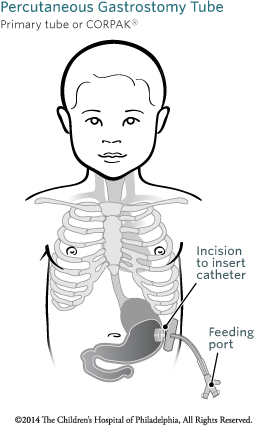


Percutaneous Endoscopic Gastrostomy Peg Tube Placement Children S Hospital Of Philadelphia



Gastro Jejunal Gj Tubes Feeding Tube Awareness Foundation
Feeding tube placement depends largely on the condition the patient is dealing with For patients who are having temporary difficulty swallowing caused by conditions that are expected to improveThen verify placement of the tube per your doctor's recommendations See more on how to check placement on our Nasal Tubes page Nasal tubes that extend into the intestines (ND and NJ tubes) may sometimes migrate into the stomach If this happens, the tube will need to be replaced at the hospital by a doctor or nurseDuration of feeding for Gtube and Jtube;



Nursing Care And Management Of Gastrostomy And Gastojejunostomy Tubes In The Pediatric Population Ce Article Nursingcenter



Enteral Feeding Tubes Accessories Avanos Medical
You may shower 24 hours after your G/GJ tube has been placed If a dressing is used, change dressing after your shower No tub baths, swimming or hot tubs for 2 months after the tube is placed Change the dressing every 12 days or after a shower using following steps Wash your hands Remove old dressingPossibly stomach, but that is a far possibility If you pull back on a syringe while attached to a jtube port you could cause the end of the tube to adhere to the inside wall of the small intestine You could cause a GI bleed!For Gastrostomy, Jejunal & Gastric Jejunal Feeding Tubes Minimized Trauma & Enhanced Patient Comfort Designed for Initial Endoscopic, Radiologic or Laparoscopic G, J & GJ Feeding Tube Placement (12 Fr)



Retrograde Gastrojejunostomy Tube Migration



Tubes Out Of Place Feeding Tube Awareness Foundation
The stomach A gastrojenunal tube (or GJ tube) is a "tube within a tube" placed through this opening One tube ends in the stomach and the other extends into the jejunum (the small intestine) This allows food and medicine to be given directly into the stomach or jejunum instead of through the mouth Giving feedings this way can be doneJejunostomy tube This specially designed feeding tube inserted into the jejunum during the abdominal phase of laparotomy for post pyloric feeding Percutaneous endoscopic gastrostomy tube with jejunal extension (PEGJ) In PEGJ, a specially designed jejunal tube is passed through a PEG, past the pylorus into the jejunumThe differences between G (gastrostomy) tube and J (jejunostomy) tube are 1 Site of placement Gtube A Gtube is a small, flexible tube inserted in the stomach via a small cut on the abdomen Jtube A Jtube is a small, flexible tube inserted into the second/middle part of the small bowel (the jejunum) 2 Uses Gtube To provide medications and nutrition


Well Informed Feeding Tubes Department Of Developmental Disabilities


Http Kidzdoc Com Wp Content Uploads 13 12 Gj Tube Gastrojejunostomy Tube Pdf
The differences between the J tube and G tube help medical students to know which one is ideal for certain feeding programs in patients These two tubes are essential in patients with a problem with eating food via their mouth instead the tubes help to transport the food directly into the GIYour surgeon cuts through the skin of your belly and inserts the tube right into your stomach to deliver a liquid food mixture or a formula PEG Tube Placement Surgery Your doctor will probablyThe unique Avanos Medical MIC* TransgastricJejunal Feeding Tube is designed for patients who require simultaneous gastric decompression and jejunal feeding Accompanying the tube are 35ml catheter tip syringe and 6ml LUERSLIP* syringe, as well as directions for use Available in several sizes to meet individual patient needs
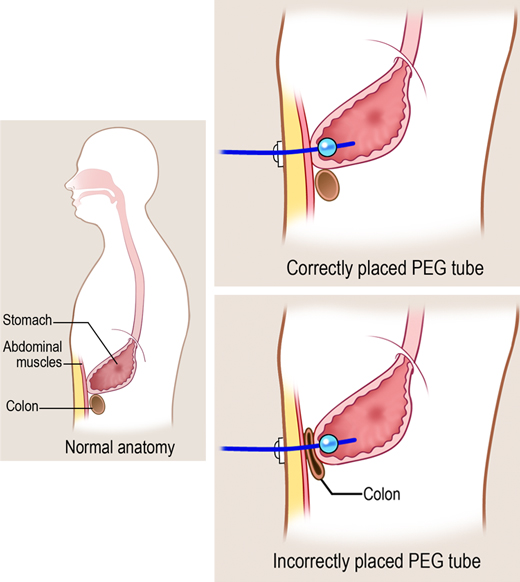


Wrong Turn Through Colon Misplaced Peg Psnet


Mic Gastric Jejunal Gj Feeding Tubes 22fr 45cm 0250 22 Medsitis
The doctor put a thin tube called a gastrostomy tube (also called Gtube, PEG tube, or feeding tube) into your stomach through the opening The tube can put liquid nutrition, fluid, and medicines directly into your stomach The tube also may be used to drain liquid or air from the stomachPEG tube placement (left) and PEJ tube placement (right) The feeding tube will give you nutrients if you're not able to get enough through eating and drinking If you're able to eat, you can continue to do so after the PEG or PEJ tube is placedI had a G/J placed on July I was very sore the first week hurt to cough and move much Second week was better, but still uncomfortable I only needed pain meds for the first day and my procedure was an outpatient procedure



Gastrostomy Tube Care G Tube G J Tube



G Gj Tubes Low Profile Combination G Gj Tube
The tube is used for feeding or drainage It can be inserted with surgery or by more minimally invasive means, such as under xray guidance by an interventional radiologist Reason for Placement The purpose of gastrostomy tube placement is generally to provide a patient temporary or permanent feeding directly through a tube in the stomachThank you, Kathleen BoltonWith conversion of percutaneous gastrostomy tube to jejunostomy tube



A B The Gj Tube Is Advanced Over The Glidewire Into The Jejunum Download Scientific Diagram



G Jet Low Profile Button G J Tube Balloon Feeding Tube
A percutaneous endoscopic gastrostomy is a procedure to make an opening between the skin of your belly and your stomach The doctor put a thin tube called a gastrostomy tube (also called Gtube, PEG tube, or feeding tube) into your stomach through the opening The tube can put liquid nutrition, fluid, and medicines directly into your stomachGJtubes are placed in the stomach just like Gtubes, but a thin, long tube is threaded into the jejunal (J) portion of the small intestine GJtubes can be a great aid for individuals with dysmotility, those who aspirate, and those who are losing a great deal of calories due to vomiting, but are not good candidates for a fundoplicationConnect syringe to medication port or "G" port on tube and gently push in medication If medication port is not available, connect syringe to end of tube Flush tube well following all medications to make sure the tube does not clog and then reconnect feeding bag
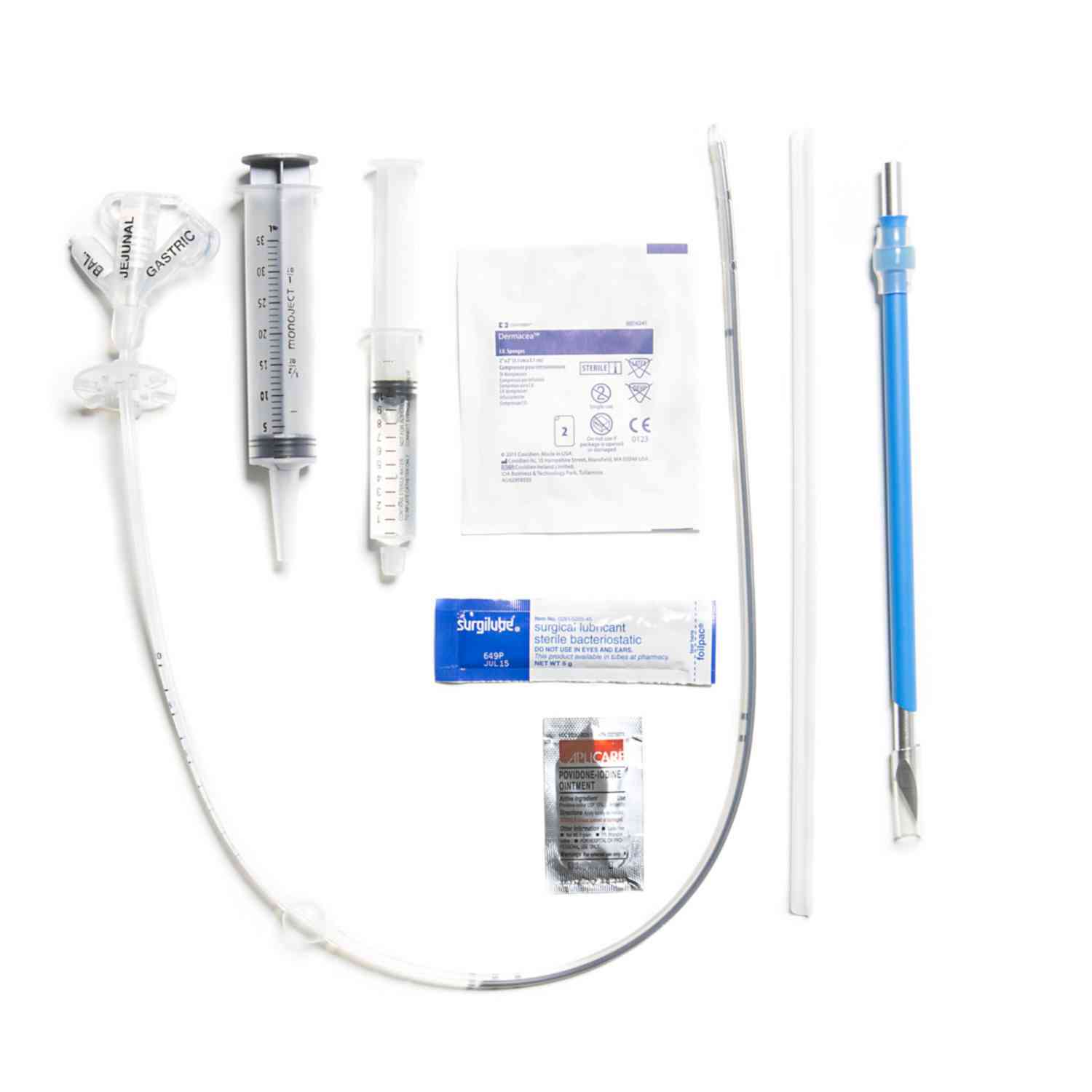


Mic Gastric Jejunal Feeding Tube Surgical Placement Avanos Medical Devices
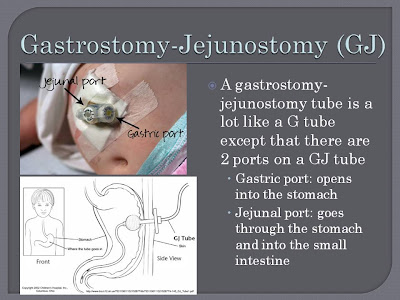


Utah Medical Home Portal Feeding Tubes And Gastrostomies
Threaded through the PEG tube r GJ tube (gastrojejunal tube) a tube placed into the stomach through the gastrostomy, and threaded into the jejunum (the first part of the small intestine) It is used to bypass the stomach if vomiting is an issue It usually has a balloon inside the stomach and has 3 ports It is placed after the PEG is removedGastric Tubes (G Tube or PEG Tube)—The gastric tube is a permanent (but reversible) type of feeding tube G tube placement requires an interventional surgical procedure in which the G tube is advanced from the abdominal skin directly into the stomachIf the GJ tube does not move easily or redness/bleeding occurs at the stoma site or the area directly underneath the GJ tube, call your doctor The patient may need to be remeasured for a longer GJ tube With each placement, the stoma length should be measured with the AMT Stoma Measuring Device



Percutaneous Endoscopic Gastrostomy Peg Feeding Tube Youtube



G Jet Family Applied Medical Technology
With placement of percutaneous jejunostomy tube Small intestinal endoscopy, enteroscopy beyond the second portion of duodenum, not including ileum;Nasal feeding tubes have no restrictions on swimming, other than making sure the tube is closed, clamped, and not hooked up to a feeding pump Ocean water and wellmaintained private pools areFeeding Tube Service Home Care Instructions after Placement of a GastroJejunal (GJ) Tube Your child is going home with a gastrojejunal feeding tube commonly called a "GJ tube" A GJ tube is a tube placed through the abdomen directly into the stomach and then passes into the small intestine (also called the small bowel)



Image Guided Percutaneous Gastrostomy Catheter Placement How We Do It Safely And Efficiently



Pdf Novel Modified Seldinger Technique For Gastrojejunal Feeding Tube Placement Semantic Scholar
When tube feedings going into the stomach cause problems with nausea, vomiting or discomfort, another kind of feeding is needed Dr Steven Liu, a pediatricTry venting the feeding tube more often;Through a small opening made in the wall of the abdomen (ostomy surgery) — Surgically placed feeding tubes include G tubes (gastrostomy), GJ tubes (gastrojejunostomy), and J tubes (jejunostomy) An NG tube is inserted into the stomach or small intestine through the nose and down the throat



Gastrostomy Transgastric Jejunal Jejunal Tube Care



An Abdominal Radiograph Confirms The Proper Placement Of The Gj Tube Download Scientific Diagram
Percutaneous GJ Tube A GJ tube is a soft, narrow tube that enters the stomach in the upper part of the abdomen and is threaded into the small intestine Once placed, this tube must remain in place for at least 8 weeks to allow your skin to heal On the outside of the tube there are three ports you will see labeled gastric,The GJ tube stays in place in your child's stomach because there is a balloon or a plastic bumper at the end of the tube inside the stomach securing it to the stomach wall There is a smaller tube (the Jtube) that will go into the jejunum via the same opening in the stomach wall, secured by the same balloonThe MIC GJ Feeding Tube comes in a variety of sizes and lengths to help ensure an accurate fit – 14, 16, 18 and 22 Fr outer diameter with multiple lengths It has a weighted jejeunal section It can be used as initial placement or replacement into an existing stoma tract Surgical, endoscopic or radiologic placement kits available



Mic Gastric Jejunal Feeding Tube Kit Endoscopic Radiologic Placement 18 Fr Avanos Medical Devices


Www Saskatoonhealthregion Ca About Nursingmanual 10 Pdf
In general, the loss of a GJ tube is not an emergency If the tube falls out, place the end of the old tube into the stoma 2 inches and tape it into place This will keep the stoma from closing DO NOT FEED through the tubeDon't ever check placement or residuals on a Jtube They are surgically placed, where would they migrate to?Depending on the patient's risk of aspiration with tube feedings, placement of a tube into the small bowel (by means of either gastrojejunostomy or direct jejunostomy) may be preferred to direct



G J Tube Care Gastrostomy Jejunostomy Tube Instructions Tips



Gastrostomy Tube Feeding In Adults The Risks Benefits And Alternatives Proceedings Of The Nutrition Society Cambridge Core
PEG Tube Placement Surgery Your doctor will probably tell you not to eat or drink anything for 8 hours before your operation At the hospital, you'll be asked to take off eyeglasses and denturesThe most common indication for GJ tube placement was gastroesophageal reflux with aspiration in 51 patients and feeding intolerance and vomiting in 19 patients The mean (range) number of tube replacements was 22 (1–14) over a median (range) duration of followup of 39 (2–474) daysSurgical feeding tube placement (G tube, GJ tube, or J tube) is performed in the operating room while the patient is under general anesthesia The feeding tube is placed directly through the stomach wall ending in the stomach (G tube) or small intestine (GJ tube) A jejunostomy (J) tube is placed directly through the wall of the intestine



Jejunal J Tubes Feeding Tube Awareness Foundation



Mic Key Gastro Jejunal Feeding Tube Vygon
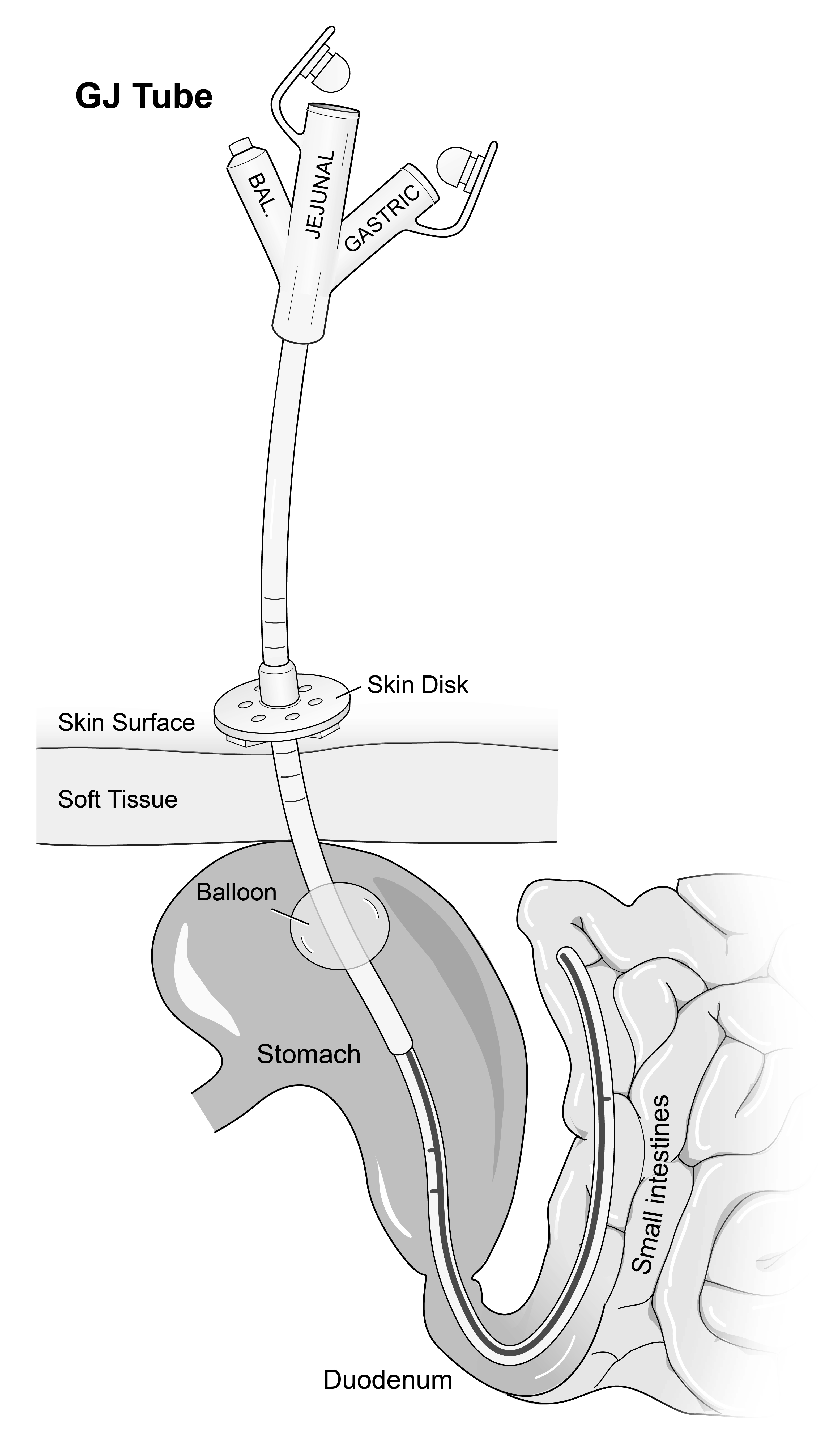


Gastrojejunostomy Tube Gj Tube Health And Nutrition Facts For You Patients Families Uw Health Madison Wi



Gastrostomy Tube G Tube For Parents Nemours Kidshealth



Enteral Balloon G Tube Benefits Information Products For Sale



Confirming G Tube Placement Emergency Physicians Monthly


Www Macpeds Com Documents Gtubepresentationmarch31 Pdf



Peritonitis Related To G Tubes And Gj Tubes



G Gj Tubes Balloon G Tubes



G Tube J Tube Peg Nurse Nursing School Child Life Specialist



Tips For A Successful Nj Tube Placement



About The Placement Of Your Peg Or Pej Tube For Feeding Memorial Sloan Kettering Cancer Center
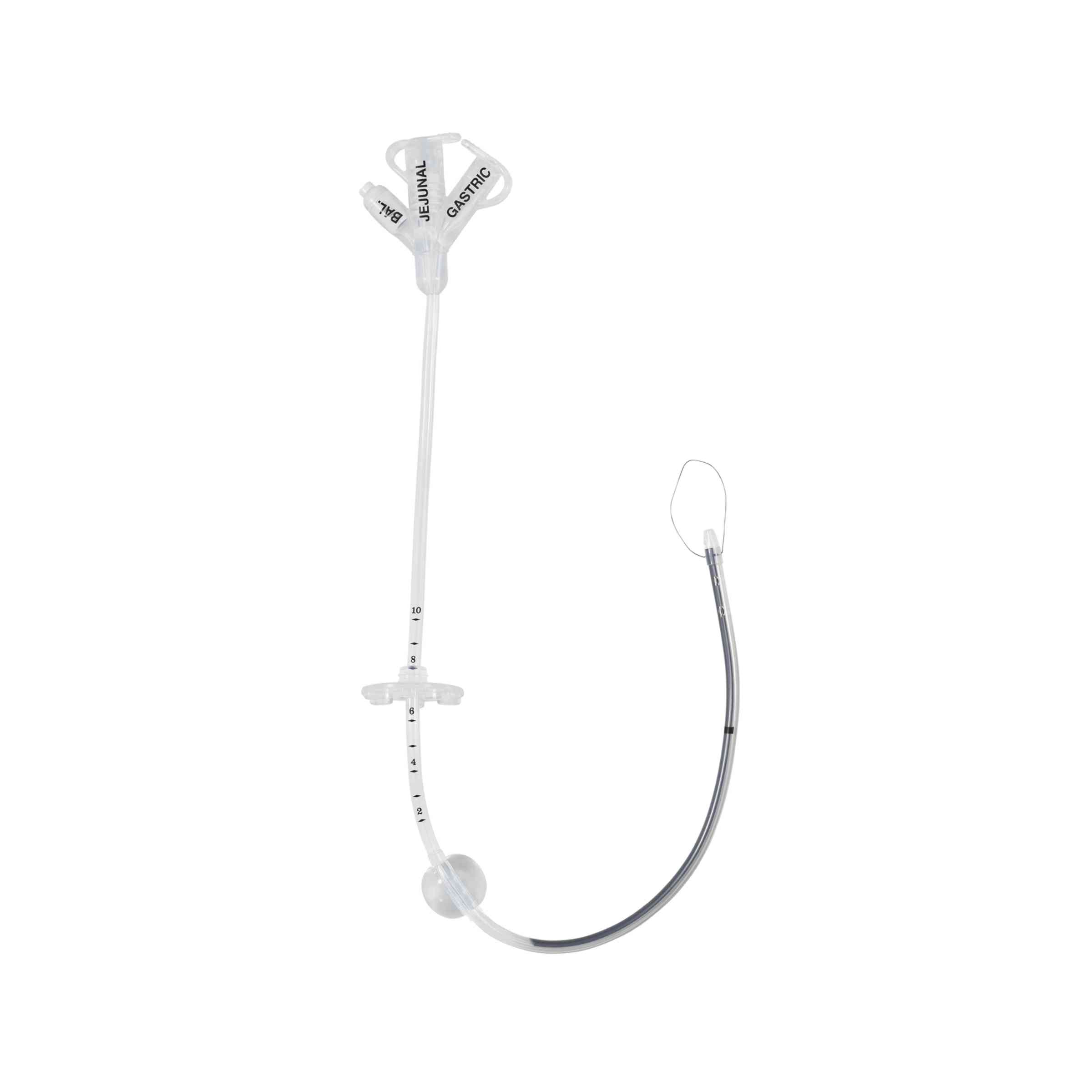


Mic Gastric Jejunal Feeding Tube Kit Endoscopic Radiologic Placement Avanos Medical Devices


Changing A G Tube Gastric Feeding Tube Mld Foundation Blog


Q Tbn And9gcr Pcxantv1oedmwyluba6gcu5vreqaw4ztjohkhlak0smtmiud Usqp Cau


Difference Between G Tube And J Tube Difference Between



Pregnant Once More 10 Rose Momma
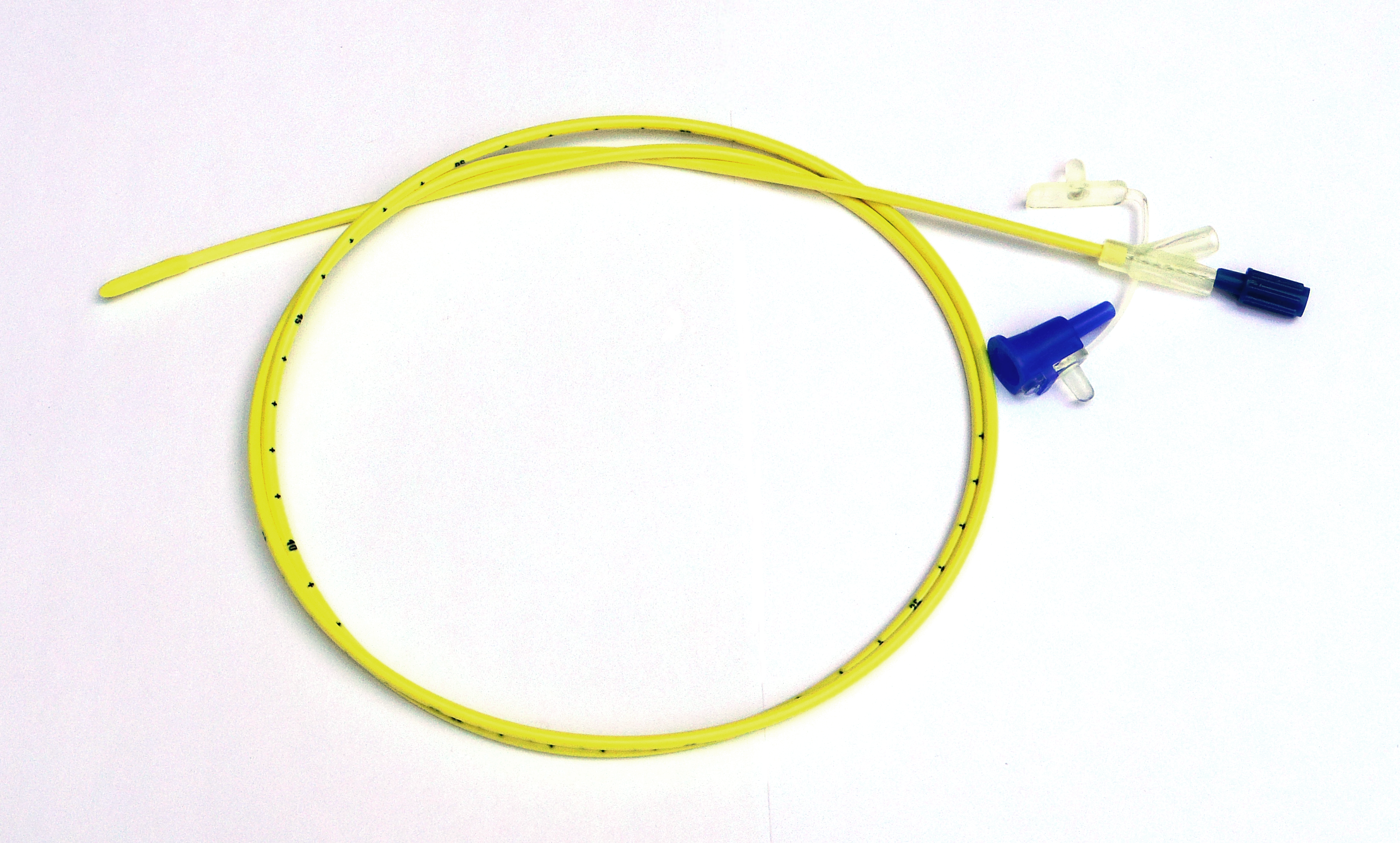


Feeding Tube Wikipedia



G Gj Tubes Corflo Peg J Tube



Choosing The Right Tube For You Oley Foundation



Mic Gastric Jejunal Feeding Tube Kit With Enfit Connector Endoscopic Radiologic Placement Avanos Medical Devices
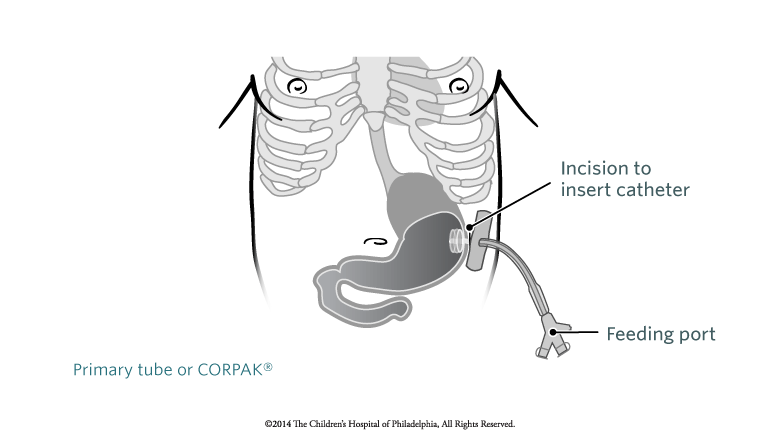


Percutaneous Endoscopic Gastrostomy Peg Tube Placement Children S Hospital Of Philadelphia



G Tube And G J Tube What S The Difference Youtube



Treatments The Global Gastroschisis Foundation


Difference Between G Tube And J Tube Difference Between
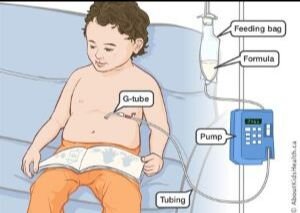


Hint What Is Used To Manage A Dislodged Feeding Tube Connected Care Sickkids



Modified Technique For Percutaneous Endoscopic Gastrojejunostomy Placement



Moss Gastronomy Tube Details Moss Tubes Inc



Gastrostomy An Overview Sciencedirect Topics



Using Feeding Tubes In General Practice



A Gastrostomy Placement Kit Scalpel Metal Guidewire 18 Gauge Download Scientific Diagram
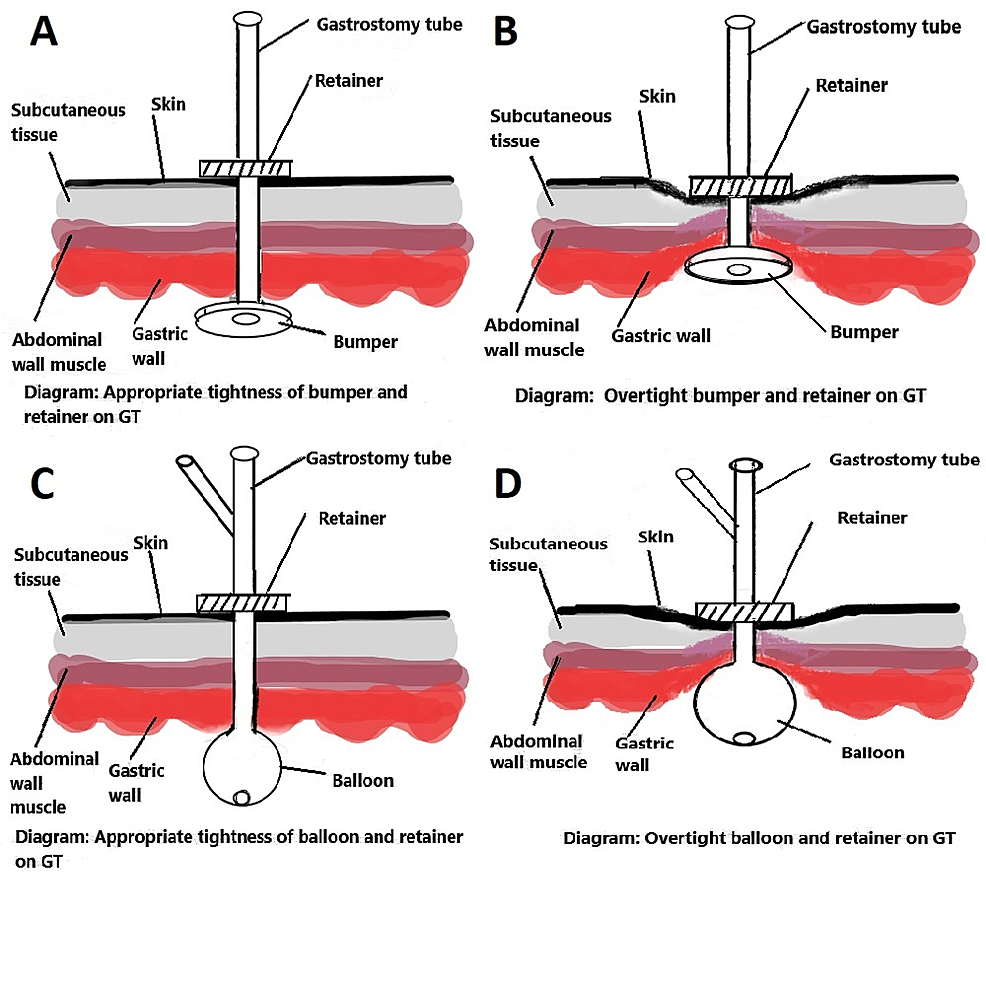


Cureus Gastric Ulcer From The Pressure Of A Gastrostomy Tube A Rare Cause Of Upper Gastrointestinal Bleeding



Peritonitis Related To G Tubes And Gj Tubes



Placement Of A Moss Gj Tube I M Having One Of These Done Next Week Medical Information Feeding Tube Tube



Feeding Tube Service Home Care Instructions After Placement Of A Gastro Jejunal G J Tube Boston Children S Hospital



Gastrostomy Transgastric Jejunal Jejunal Tube Care


1



The Als Association



Gastrostomy Versus Gastrojejunostomy And Or Jejunostomy Feeding Tubes A Review Of Clinical Effectiveness Cost Effectiveness And Guidelines Ncbi Bookshelf



Gastro Jejunal Gj Tubes Feeding Tube Awareness Foundation


Q Tbn And9gcs7yznfkba 4m5hdmawatgy5rxglipxw0bbe5vqdofbinrz178v Usqp Cau



Gastro Jejunal Tube Gj Tube Parts Extension Tubefed



Gastrostomy Transgastric Jejunal Jejunal Tube Care



G Gj Tubes Corflo Peg J Tube



Image Guided Percutaneous Gastrostomy Catheter Placement How We Do It Safely And Efficiently


Q Tbn And9gcrst7iaq7gmeitus1wyei3kdlyegdh Ymwxl2wkxze4yu9nwnjn Usqp Cau



Gastrostomy Versus Gastrojejunostomy And Or Jejunostomy Feeding Tubes A Review Of Clinical Effectiveness Cost Effectiveness And Guidelines Ncbi Bookshelf



Feeding Tube Service Home Care Instructions After Placement Of A Gastro Jejunal G J Tube Boston Children S Hospital


Emdocs Net Emergency Medicine Educationtroubleshooting G Tubes J Tubes Common Scenarios Tips Tricks Emdocs Net Emergency Medicine Education
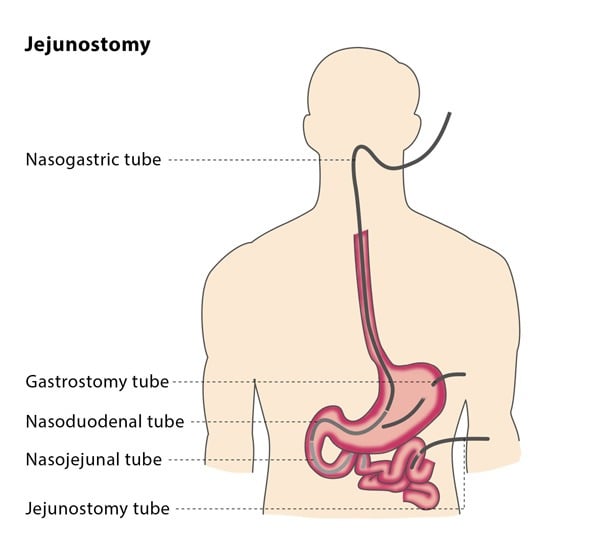


Jejunostomy Cirse



Pdf Laparoscopic Gastrojejunostomy Tube Placement In Infants With Congenital Cardiac Disease


Www Tuftschildrenshospital Org Media Brochures G Tube Patient Education Ashx



Metoclopramide Reduces Fluoroscopy And Procedure Time During Gastrojejunostomy Tube Placement A Placebo Controlled Trial Journal Of Vascular And Interventional Radiology



Pdf Novel Modified Seldinger Technique For Gastrojejunal Feeding Tube Placement



Tube Feeding Amy Speech Language Therapy Inc



Choosing The Right Tube For You Oley Foundation



About The Placement Of Your Peg Or Pej Tube For Feeding Memorial Sloan Kettering Cancer Center



Gastrostomy Transgastric Jejunal Jejunal Tube Care



Selection And Management Of Commonly Used Enteral Feeding Tubes Nursing Times



Gastro Jejunal Gj Tubes Feeding Tube Awareness Foundation



Gastrostomy Tube Exchange Nejm



Primary Gastrojejunostomy Tube Placement Using Laparoscopy With Endoscopic Assistance A Novel Technique Sciencedirect



Endovive Ttp Jejunal Feeding Tube Boston Scientific



Enteral Feeding Tubes Accessories Avanos Medical



Abdominal Pain G Tube Problems Emergency Physicians Monthly



Gastrostomy Tube Placement Series Procedure Part 2 Medlineplus Medical Encyclopedia



G Gj Tubes Balloon G Tubes


Mic Gastric Jejunal Gj Feeding Tubes 22fr 45cm 0250 22 Medsitis



A Novel Through The Snare Technique For Percutaneous Endoscopic Gastrojejunostomy Tube Placement Videogie



Feeding Tube Placement For Enteral Feeding Together


When Is It Time For A G Tube Nbia



Percutaneous Endoscopic Transgastric Jejunostomy Peg J A Retrospective Analysis On Its Utility In Maintaining Enteral Nutrition After Unsuccessful Gastric Feeding Bmj Open Gastroenterology
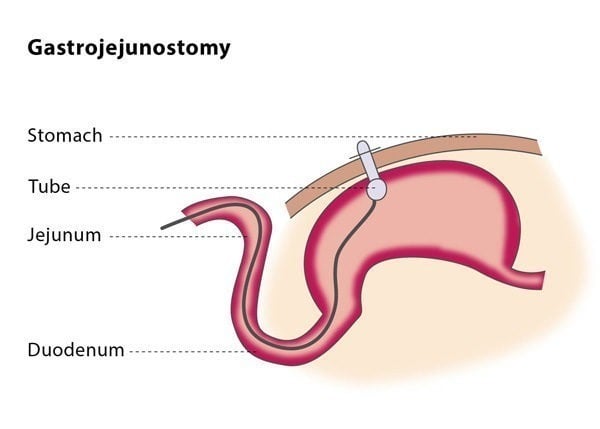


Gastrojejunostomy Cirse



What To Expect During A Gj Feeding Tube Placement Mast Cell Disease Style Youtube



What Doctors Do Not Tell You About Your Feeding Tube



G Jet Low Profile Button G J Tube Balloon Feeding Tube


コメント
コメントを投稿